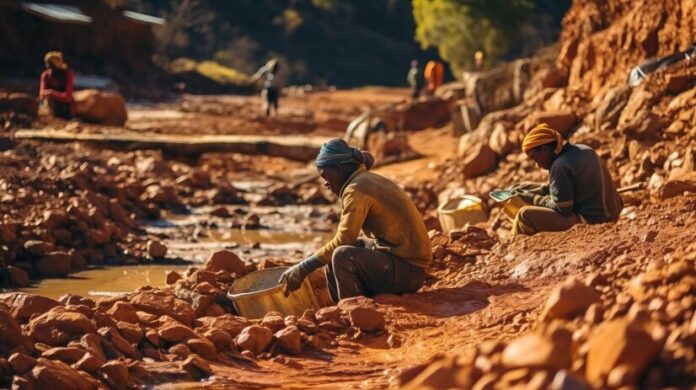In the heart of mining communities worldwide, a quiet revolution is taking place as locals and industry leaders join forces to tackle one of the sector’s most pressing challenges: waste management. From the bustling mines of South America to the remote outposts of Australia, the focus is shifting towards sustainable practices that promise to safeguard both the environment and livelihoods.
In the rugged landscapes of Chile’s Atacama Desert, where copper mines dominate the horizon, residents and mining companies are collaborating on innovative solutions to reduce the impact of mining waste. Juan Ramirez, a community leader in Calama, speaks passionately about the changes he’s witnessed: “We used to see tailings ponds as a necessary evil. Now, with new technologies and community involvement, we’re finding ways to turn waste into opportunity.”
One such innovation gaining momentum is the use of advanced sensors and monitoring systems to ensure the safety and efficiency of tailings dams. This technology not only alerts operators to potential risks but also provides real-time data to improve decision-making and prevent environmental disasters. “It’s about protecting our water sources and preserving our land for future generations,” Ramirez emphasizes.
Across the Pacific Ocean in Australia’s Pilbara region, where iron ore mines stretch as far as the eye can see, similar efforts are underway. Local Aboriginal communities, long stewards of the land, are playing a pivotal role in shaping waste management practices that respect traditional values and environmental sustainability. “For us, it’s about balance,” explains David Waruwi, an elder of the Ngarluma people. “We want mining to benefit our people while preserving our cultural heritage and natural resources.”
This sentiment echoes globally, as mining companies increasingly recognize the importance of community engagement in waste management strategies. In Canada’s Yukon Territory, initiatives are underway to integrate local knowledge into reclaiming abandoned mine sites and repurposing waste materials. “Our ancestors lived off this land for centuries,” remarks Sarah McLeod, a member of the Tr’ondëk Hwëch’in First Nation. “Now, we’re reclaiming it together, ensuring a sustainable future for all.”
As the mining industry evolves, so too does its approach to waste management. Regulatory frameworks are tightening, pushing companies to adopt cleaner technologies and adhere to stricter environmental standards. Yet, at its core, the shift towards sustainable practices is driven by human connection – the bond between mining communities and the land they call home.
Looking ahead, the path to sustainable mining waste management is paved with collaboration, innovation, and a shared commitment to stewardship. From the dusty streets of Calama to the expansive plains of the Pilbara, the voices of those most impacted by mining operations are leading the charge towards a greener, more responsible future.
In the end, it’s not just about managing waste – it’s about nurturing relationships, fostering resilience, and building a legacy of environmental stewardship that transcends generations.




